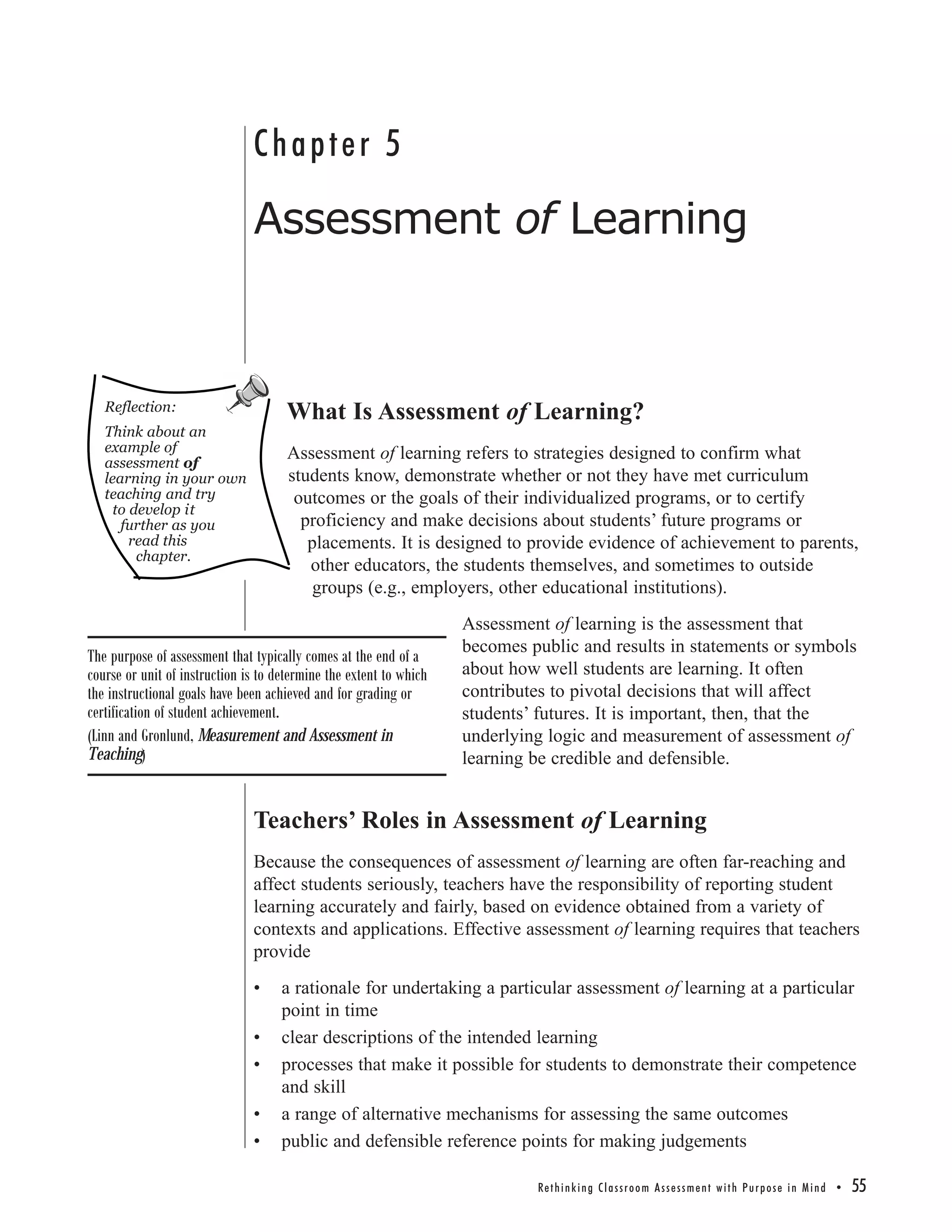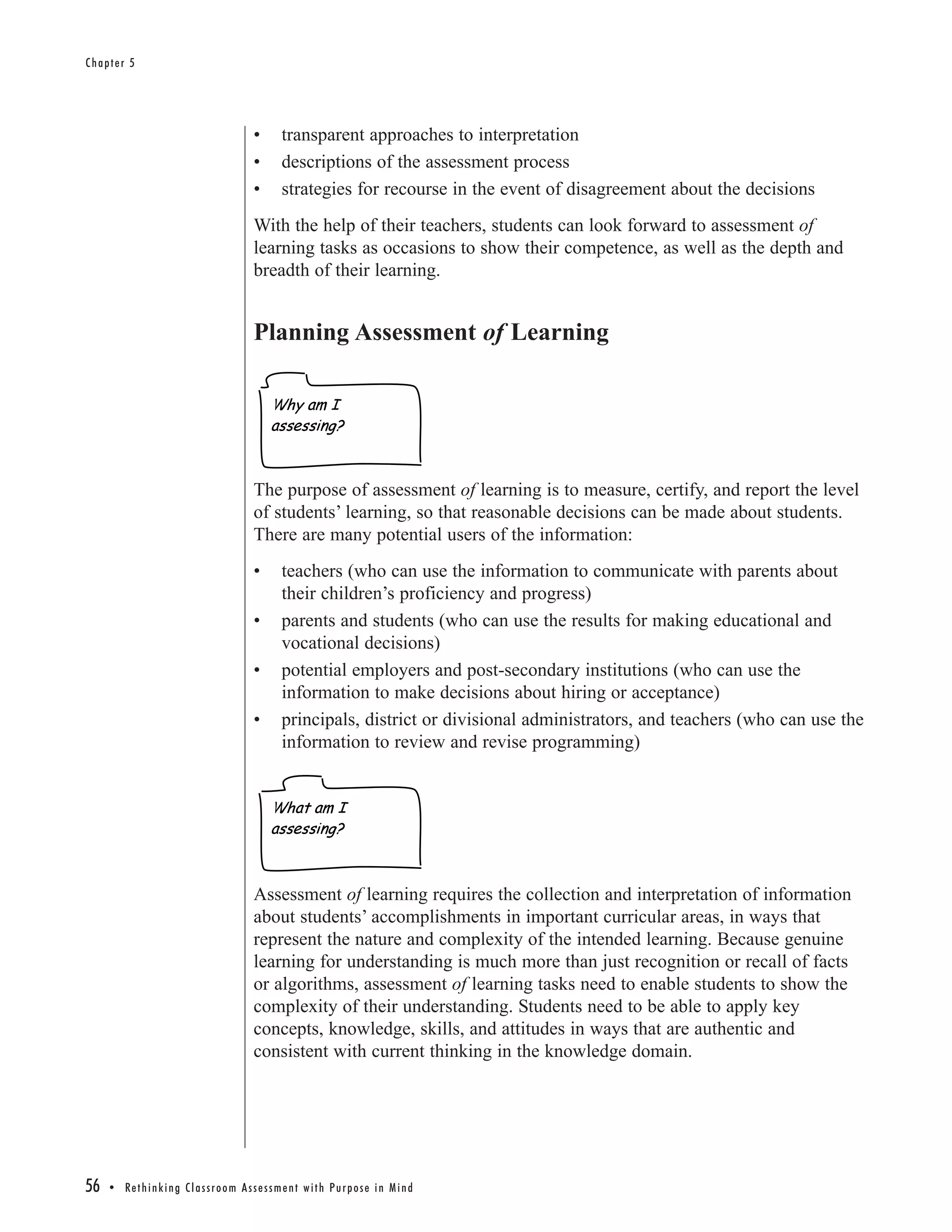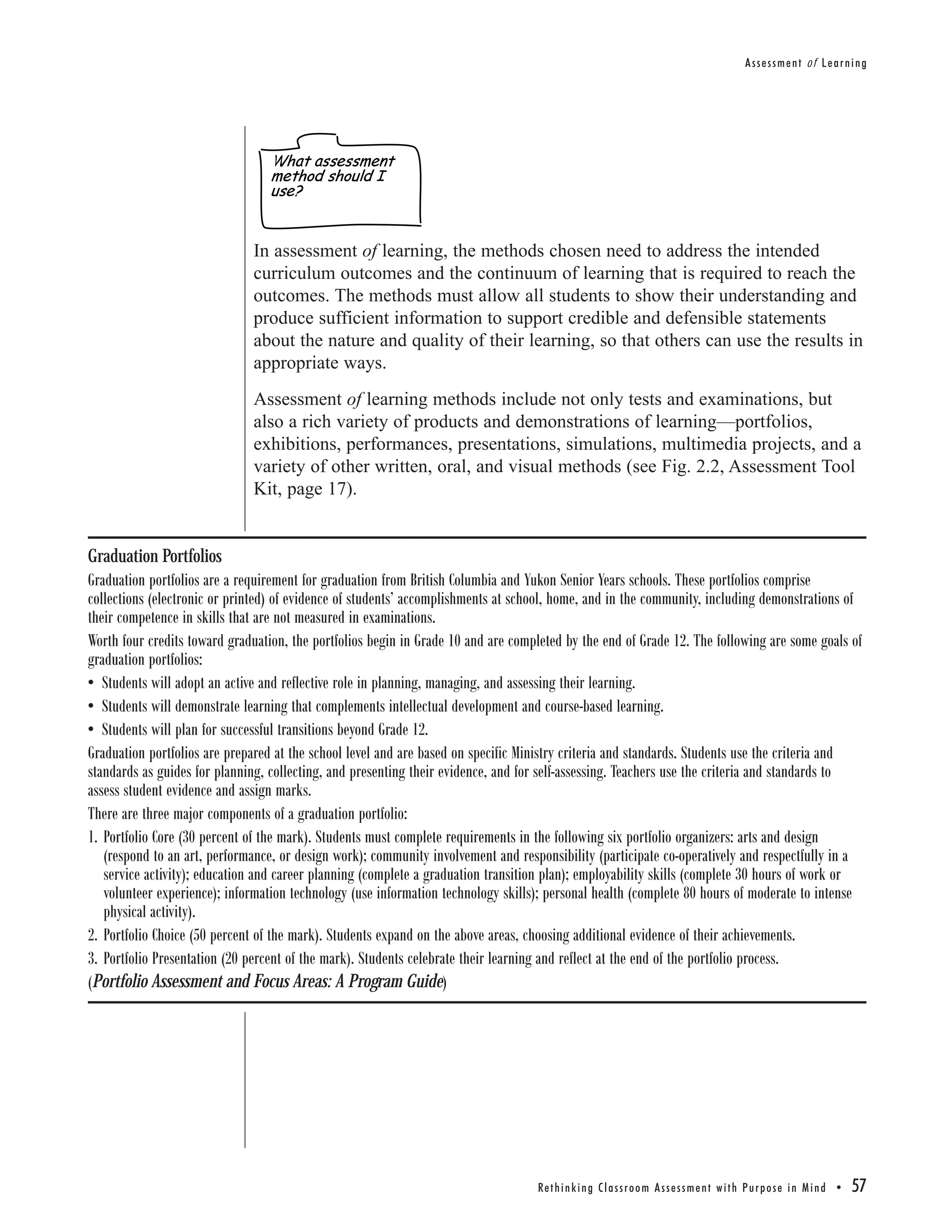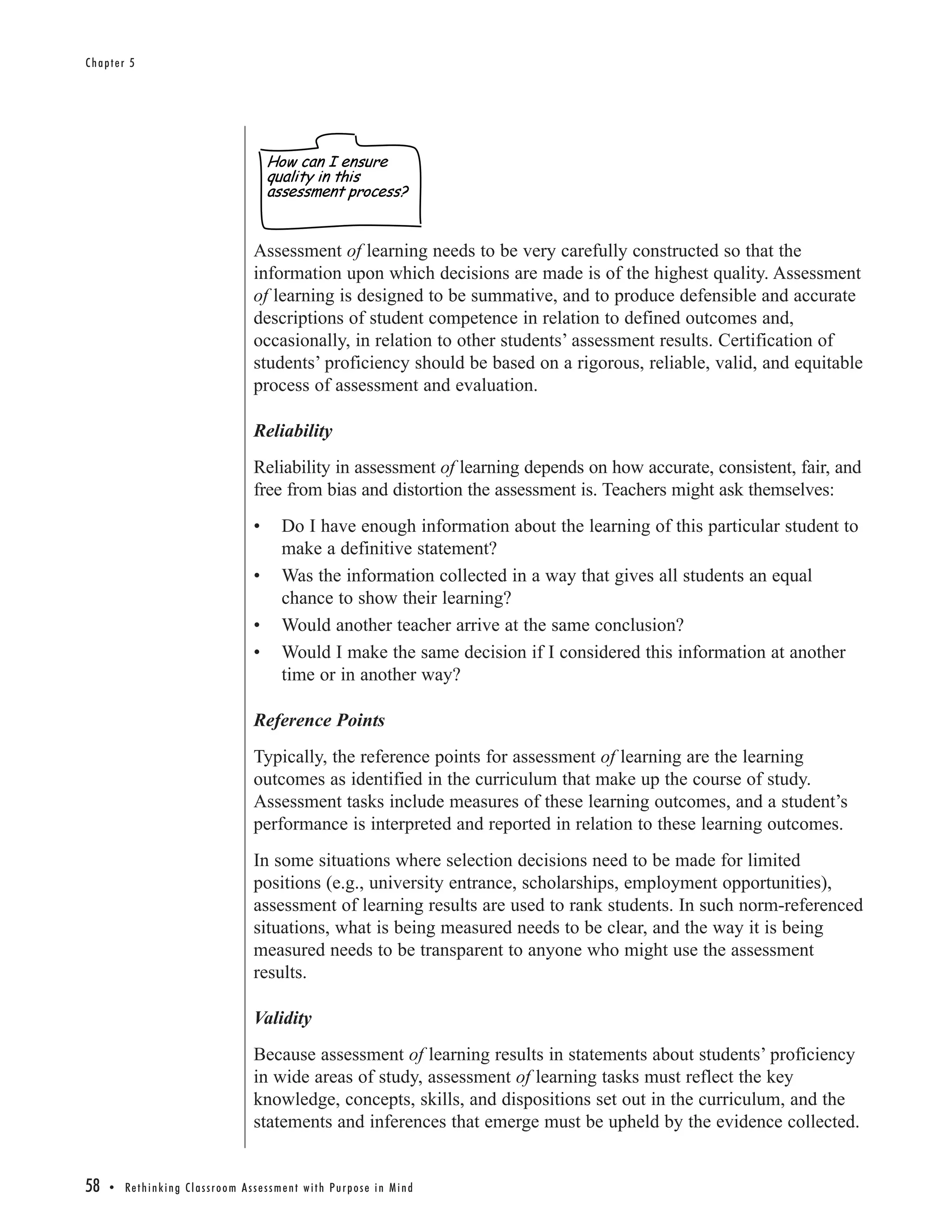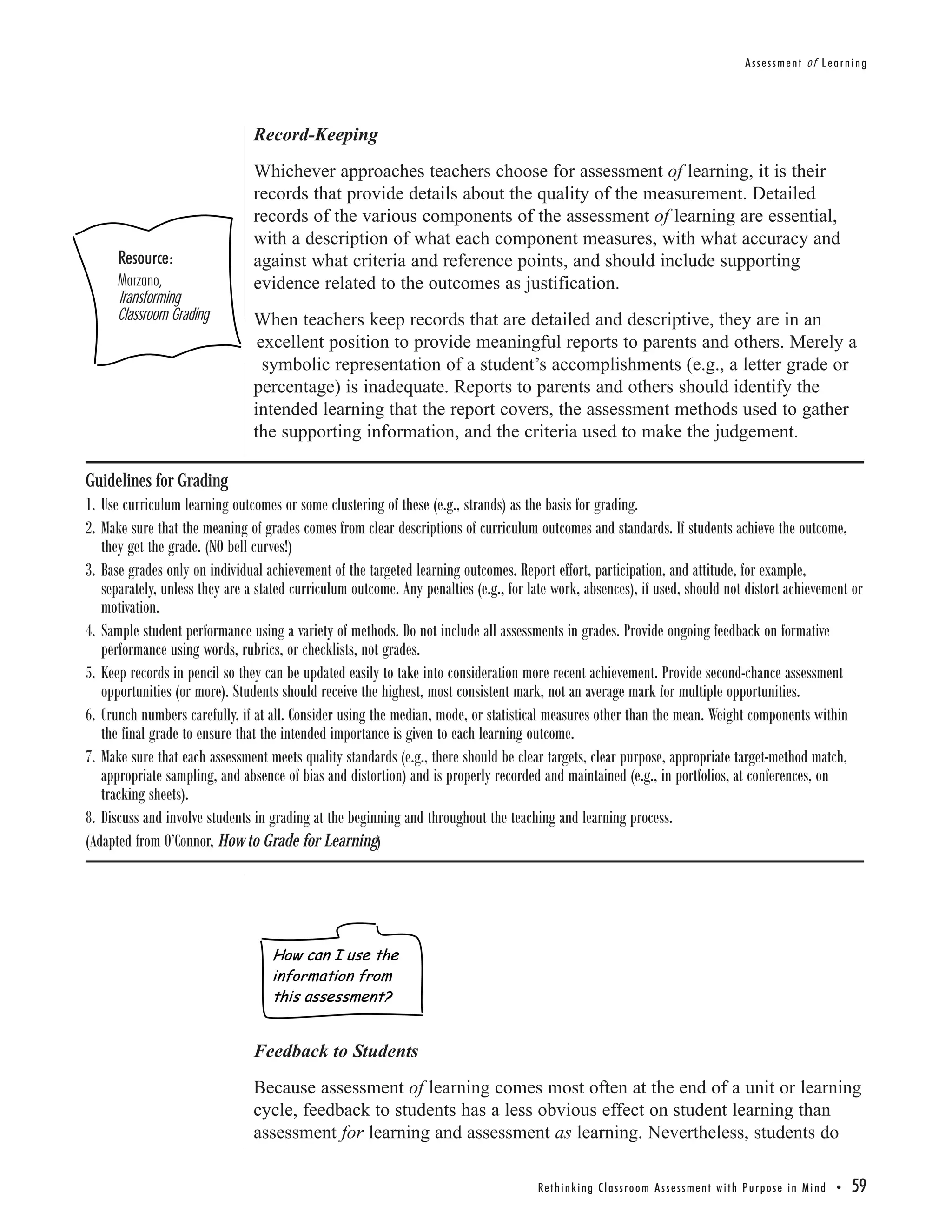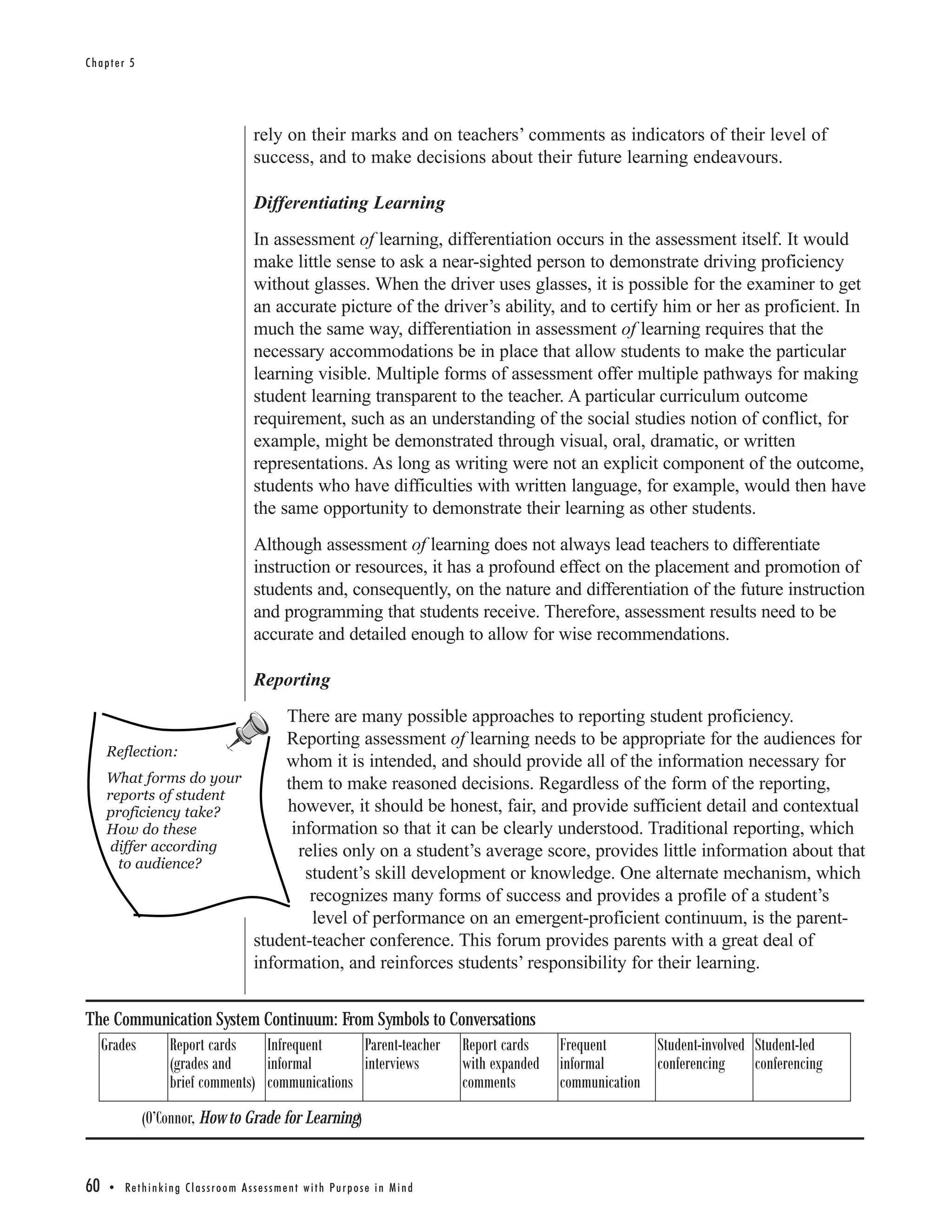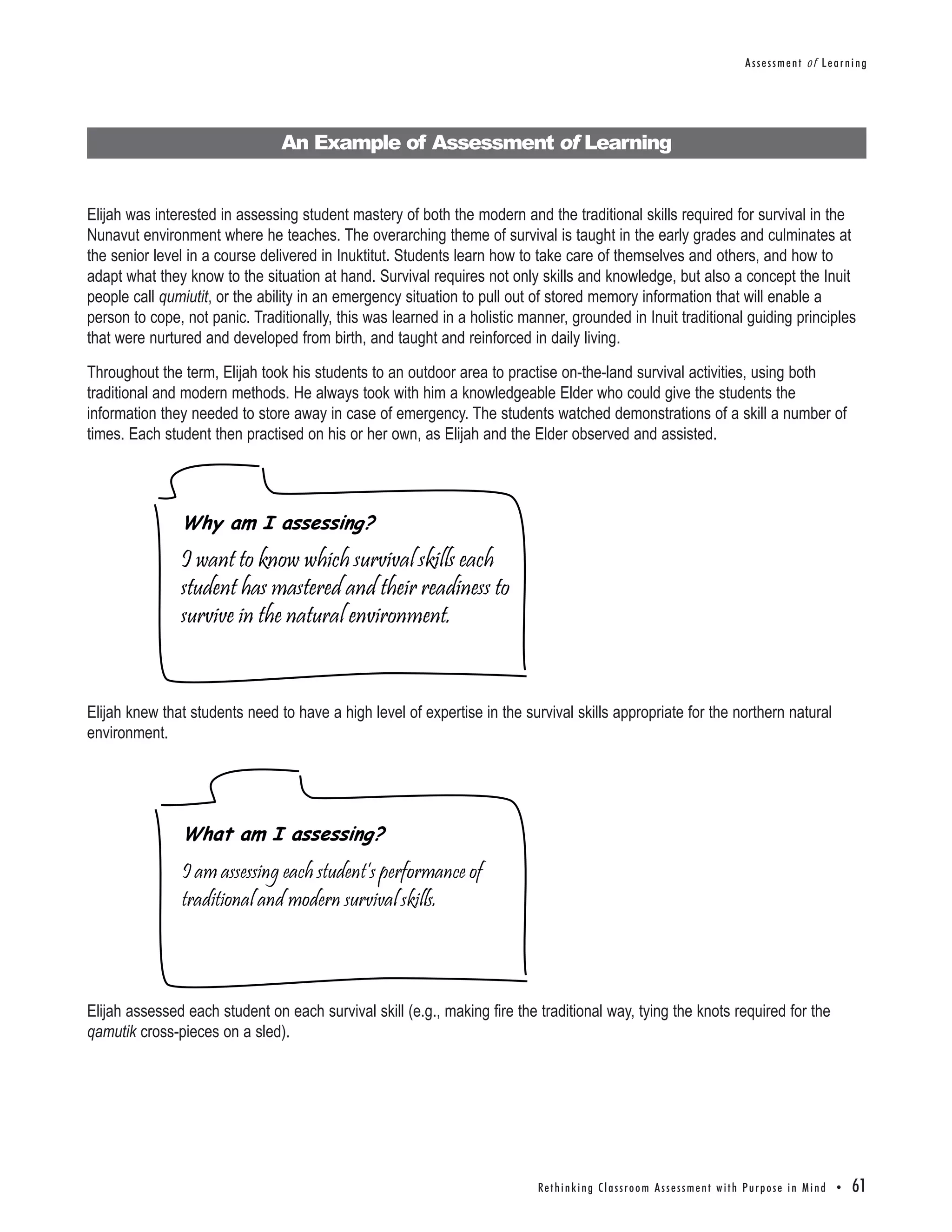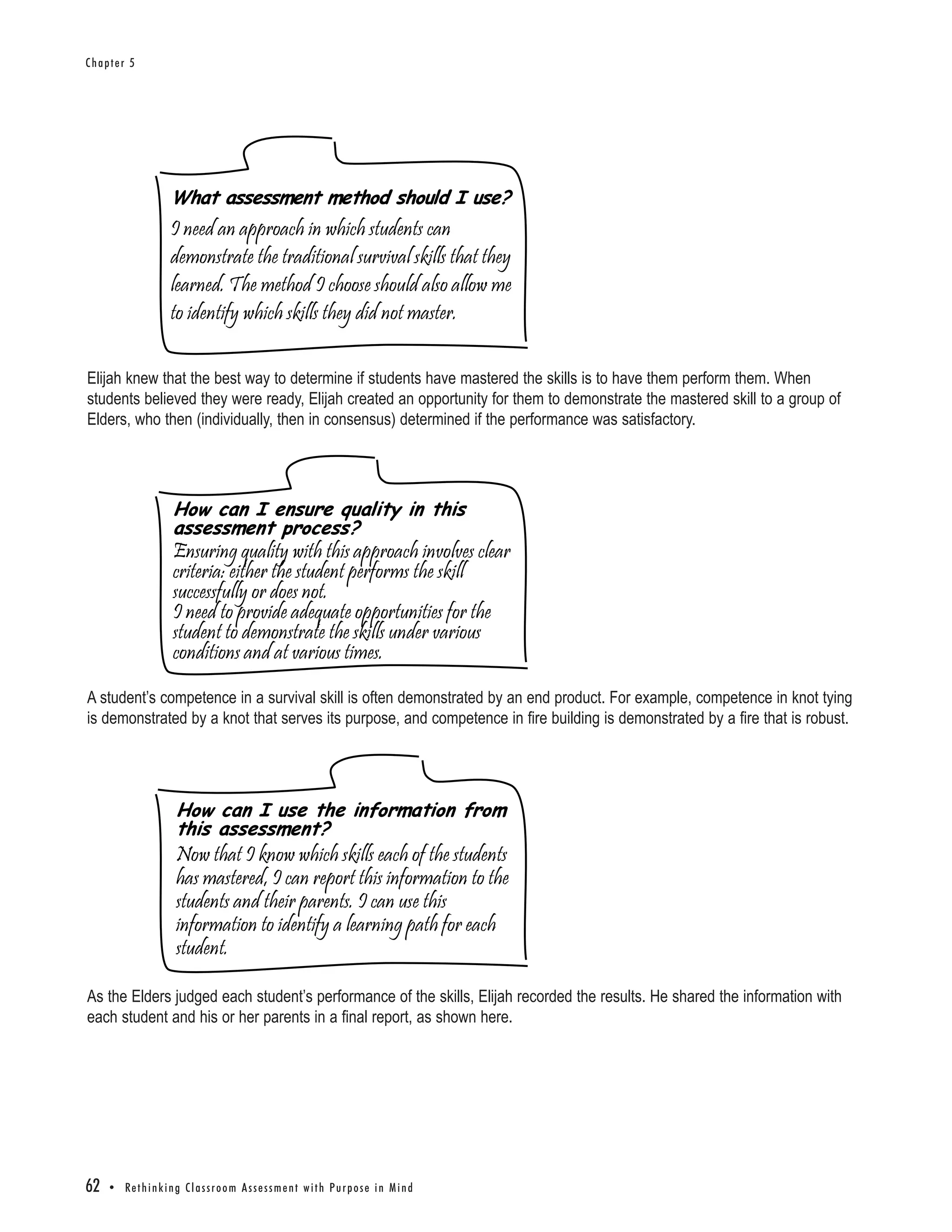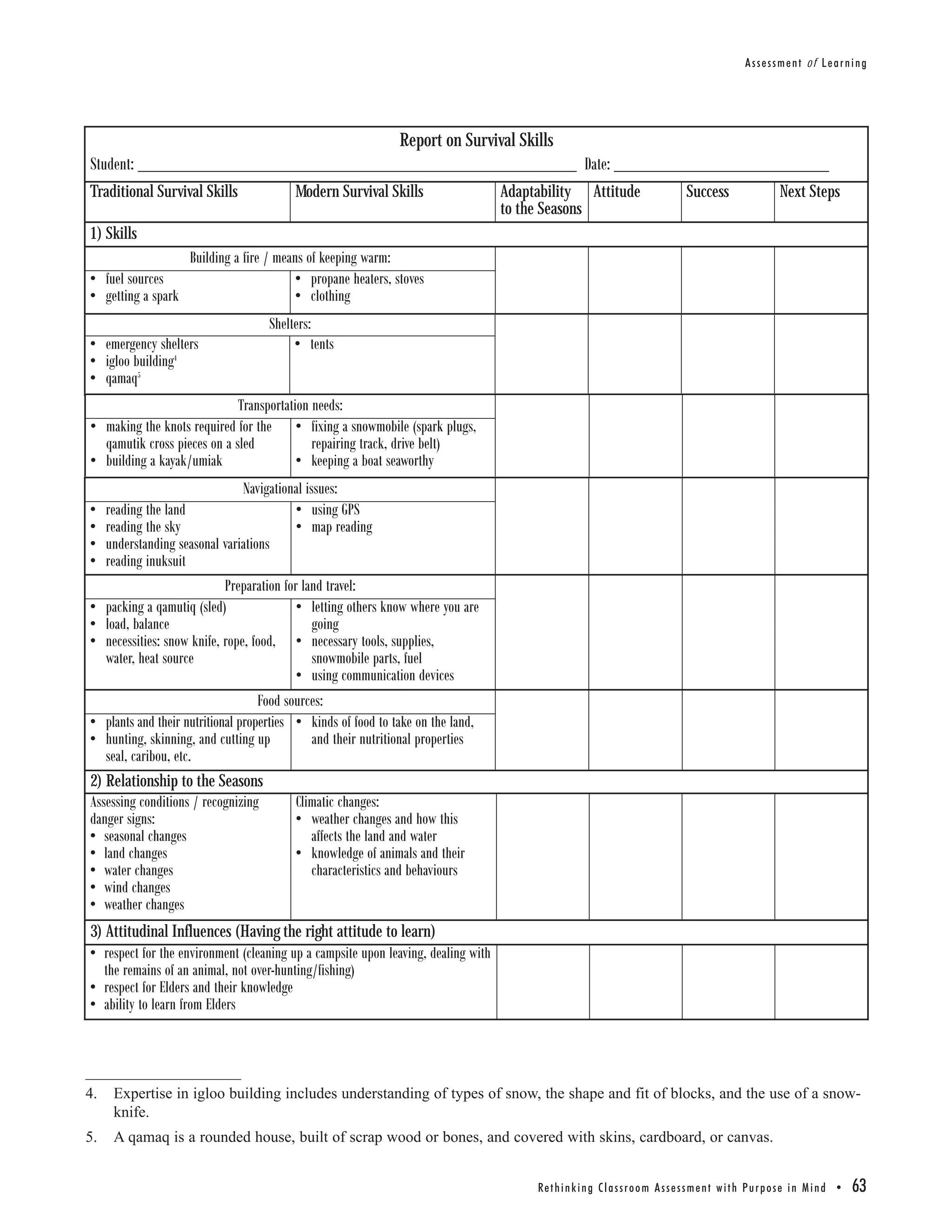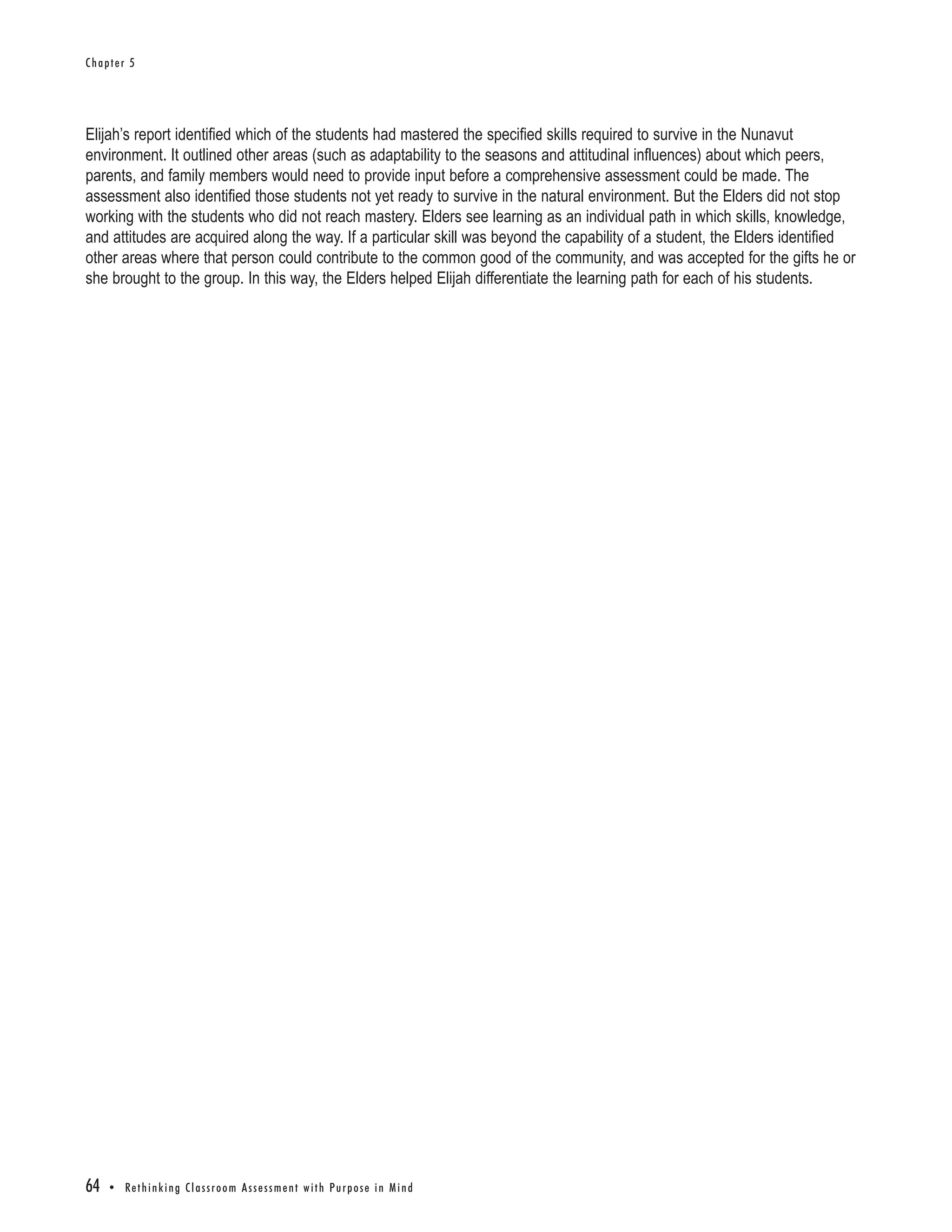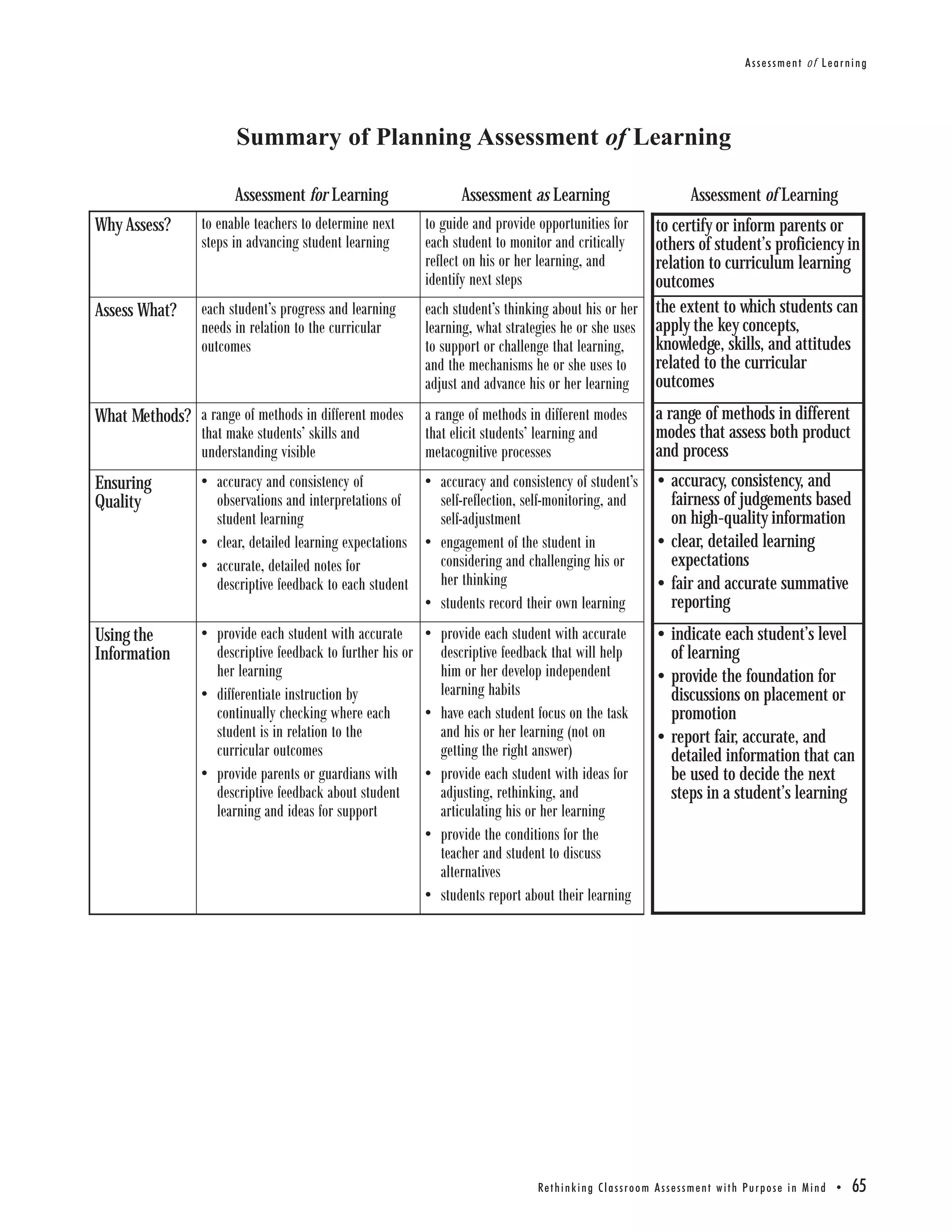Assessment of learning refers to strategies designed to confirm what students have learned and determine if they have achieved intended learning outcomes. It provides evidence of student achievement to various stakeholders and informs decisions about students' future placements or programs. Effective assessment of learning requires teachers to provide a clear rationale for the assessment, descriptions of the intended learning, and processes for students to demonstrate competence. It also requires maintaining high-quality records to support credible reporting of student proficiency. An example is provided of a teacher assessing survival skills learned by students in an outdoor class, which involves students demonstrating skills and the teacher identifying mastered and non-mastered skills.
